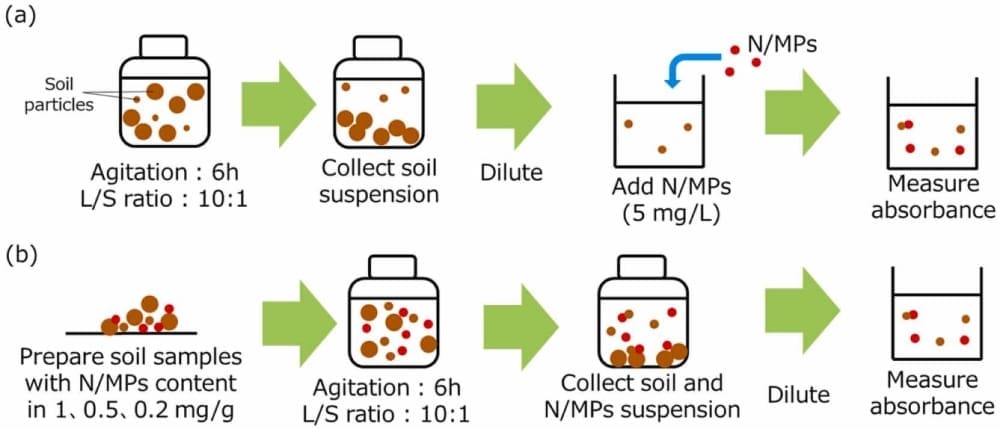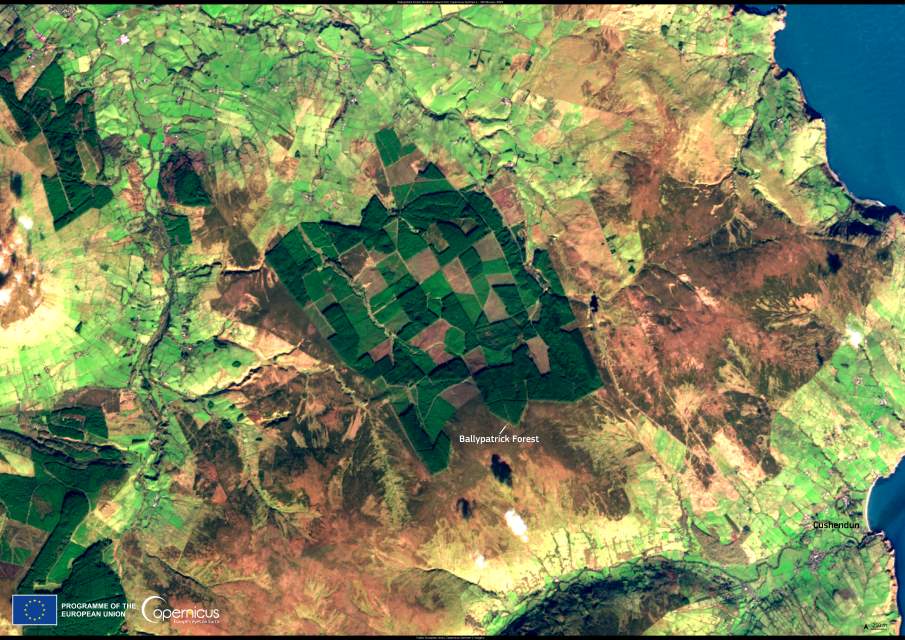Current techniques for measuring nano/microplastic (N/MP) concentrations in soil require the soil organic matter content to be separated and have limited resolution for analyzing N/MPs sized <1 µm. Therefore, researchers have developed a novel yet simple method to measure N/MP concentration in different soil types using spectroscopy at two wavelengths. This method does not require the soil to be separated in order to detect the N/MPs and can accurately quantify N/MPs regardless of their size.
Nano and microplastics are a well-known menace, found practically everywhere in nature, including soil, oceans, drinking water, air, and even the human body. Studies show that soils in particular hold a significant portion of N/MPs. The problem with these N/MPs is their microscopic size, which allows them to easily migrate through soil into the ground or freshwater bodies due to rainwater leaching. From there, they enter the human body. Hence, it is imperative to understand the distribution and movement of the soil’s N/MPs to gauge their threat and mitigate it.

Current techniques for measuring N/MP concentrations in soil require separating the soil organic matter content through chemical and physical processes. Subsequently, the isolated N/MPs are analyzed using a microscope, Fourier-transform infrared spectroscopy, Pyrolysis–gas chromatography/mass spectrometry, or Raman spectrometry. However, these techniques require advanced skills and have limited resolution for analyzing N/MPs smaller than 1 µm. Moreover, often some of the N/MPs in the soil are lost during the separation process, leading to inaccurate measurements. Therefore, it is necessary to develop a simple yet accurate method to detect and measure N/MPs ≤1 µm in soil.
To this end, a team of researchers led by Mr. Kyouhei Tsuchida from Waseda University and National Institute of Advanced Industrial Science and Technology, along with Dr. Yukari Imoto, Dr. Takeshi Saito, and Dr. Junko Hara from the National Institute of Advanced Industrial Science and Technology and Dr. Yoshishige Kawabe, also from Waseda University, devised a novel and simple method to measure N/MP concentrations in soil using spectroscopy without separating the soil organic matter.
Spectroscopy can determine the concentration of N/MPs in soils based on how much light of a particular wavelength passes through the sample and how much gets absorbed. In this way, spectroscopy can potentially detect N/MPs regardless of size, provided the correct wavelengths are used to distinguish between the N/MPs and soil. Accordingly, the researchers developed a method to use the difference between the absorbance spectra of N/MPs and soil particles to quantify the N/MPs.
Their findings were published in Ecotoxicology and Environmental Safety journal on 28 May 2024.
Six soil suspensions were created from soil samples with different characteristics, such as particle size distribution and organic content, and were mixed with polystyrene nanoparticles sized 203 nm. This created six different simulated N/MP-contaminated soil suspensions, with the N/MP concentration maintained at 5 mg/L.
“We measured the absorbance of these soil suspensions at various wavelengths ranging from 200 to 500 nm using a spectrophotometer and based on this, determined the N/MP concentrations in the soil. Then the best combination of two wavelengths was identified for measuring N/MPs, which helped negate the interference from soil particles and leached components in the suspension,” explains Tsuchida.
The researchers found that a wavelength combination of 220–260 nm and 280–340 nm had the lowest error level for the six samples and was thus found to be suitable for measuring N/MP concentrations in different soil types. They also created a calibration curve between the concentration of N/MPs in the soil suspensions and N/MP content added to the dry soil samples. The calibration curve showed a linear relationship between the two variables and took into account the adsorption of N/MPs on soil particles. This enabled accurate estimation of the concentration of N/MPs in the soil.
These results demonstrate the efficacy of this simple spectroscopy-based method to correctly measure the concentration of N/MPs in soil, without any cumbersome separation process.
“Our novel measurement approach can quantify different N/MPs, including polyethylene and polyethylene terephthalate, in a variety of soils and can easily be used as an initial assessment tool. Moreover, it can help further our understanding of the distribution and migration behavior of N/MPs in the geosphere environment,” concludes Tsuchida.
More information: Kyouhei Tsuchida, Yukari Imoto, Takeshi Saito, Junko Hara, Yoshishige Kawabe, ‘A novel and simple method for measuring nano/microplastic concentrations in soil using UV-Vis spectroscopy with optimal wavelength selection’, Ecotoxicology and Environmental Safety (2024); DOI: 10.1016/j.ecoenv.2024.116366. Waseda University – Press Release. Featured image credit: Freepik




